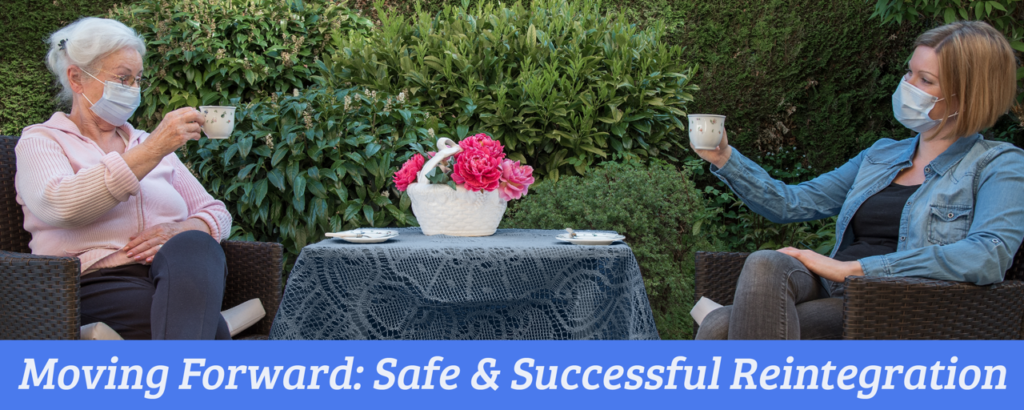
In September, the Centers for Medicare and Medicaid Services (CMS) released exciting news for the advancement of safe visitation and resumption of group activities and communal dining in nursing homes (see QSO-20-39-NH). As the effects of isolation have taken a tremendous toll on our elderly population, care teams and residents are ready to implement safe steps to social reintegration. Facilities, including therapy departments, can now offer a variety of group activities while also taking the necessary precautions.
CMS provides Core Principles of COVID-19 Infection Prevention which should be incorporated as best practice to reduce the risk of COVID-19 transmission in order to resume visitation and group activities. It is indicated that group activities may be facilitated (for residents who have fully recovered from COVID-19 and for those not in isolation for observation, suspected or confirmed COVID-19 status) with social distancing among residents, appropriate hand hygiene, and use of cloth face coverings or facemasks. CMS’ examples of group activities include book clubs, crafts, movies, exercise and bingo.
As facilities implement these principles and activities, it is important to remember, early in the pandemic, resident-centered care plans were adapted for isolation considerations. These care plans should now be reviewed, especially in the light of infection control prevention, trauma-informed care, cognitive changes and fall prevention. It should not be assumed that residents will function at the same level as they did pre-pandemic; therefore, consider the increased risks associated with the possible secondary effects of the pandemic and isolation precautions:
- Infection Prevention and Control: Review the resident’s ability to safely wear cloth face coverings and understanding of or cueing needed for social distancing. Identify assistance and reminders needed to perform hand hygiene.
- Trauma-Informed Care (TIC): Consider whether the resident is suffering from anxiety associated with infection risk or recovery and provide a facility plan for safe reopening. Ensure staff buy-in to the plan and implementation in order to set good examples and provide TIC support. Be sensitive to the effects of a busy, potentially noisy, environment following a period of social isolation.
- Cognitive changes: As social interaction increases and the physical environment changes, be aware of behavioral responses and signs or symptoms of confusion. Assess behaviors as a form of communicative response to the environment and adapt as appropriate.
- Fall prevention: Consider that as the resident’s access to the facility and grounds expands, their environment is now exponentially larger. Review their ability to safely ambulate throughout the facility as this may place the resident at increased risk of falls and wayfinding confusion.
Protecting residents from COVID-19 highlights the struggle between keeping residents healthy and providing beneficial, daily experiences that can impact quality of life. Nursing, therapy, and facility staff must work as a team to implement creative means to facilitate safety during group activities and social reintegration to allow our residents to safely flourish in light of the challenges they encounter.


